A visit to Bath, UK, in Somerset County, in its splendor throughout the ages
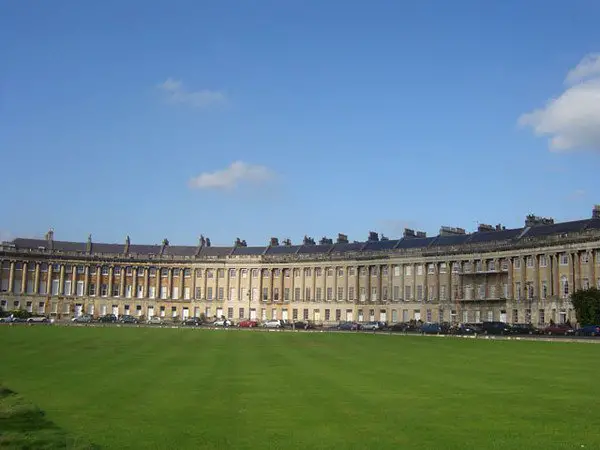
On a Saturday evening in October, I was lounging in a rooftop pool watching the sunset over Bath Abbey. Yes, that’s right: Bath. In the UK – a country not exactly renowned for its warmth.
As the only town in Britain with natural hot springs, Bath, UK, has been charming residents and visitors alike with its waters since Roman times.
The thermal stuff wasn’t the only attraction, though: in the eighteenth century, Bath was one of the highlights of England’s social scene; the country’s affluent citizens drawn there by elegant balls and the grandeur of the city’s architecture. Nowadays, the honey-colored Georgian buildings, constructed in Bath stone, the waters and thriving restaurant and shopping scenes ensure that Bath is a firm fixture on the UK tourist circuit.
Despite Bath’s obvious charms, I had never visited until this year. When my friend invited me to spend a weekend at her house in Bath, I booked my train ticket quicker than you could say ‘hot springs.’ Located in the county of Somerset in south-west England, near the edge of the Cotswolds, Bath is within easy reach of Bristol, London, and Oxford.
Our agenda for the weekend featured plenty of sightseeing, punctuated by frequent pauses to refuel. Bath is compact and easily walkable; crossing Georgian Pulteney Bridge (the only bridge in the UK with shops built into it, like Venice’s Rialto Bridge) you’re in the center of town, with the Abbey, Roman Baths and the Royal Crescent all within rapid reach.
Strolling through the streets, we wandered past cute boutiques, cafés, and tea rooms before reaching the Circus. There were no acrobats or clowns here though: Bath’s Circus is three crescents of three-story houses arranged in a circle around a green. A short walk away is another key sight of Bath’s architectural itinerary: the Royal Crescent.
A grand sweep of houses overlooking a park, the Crescent took me back to Jane Austen’s time, as I imagined aristocratic ladies descending from carriages in their finest gowns. You can find out more about life in this era at No.1 Royal Crescent, a museum set in an excellently-restored Georgian house.
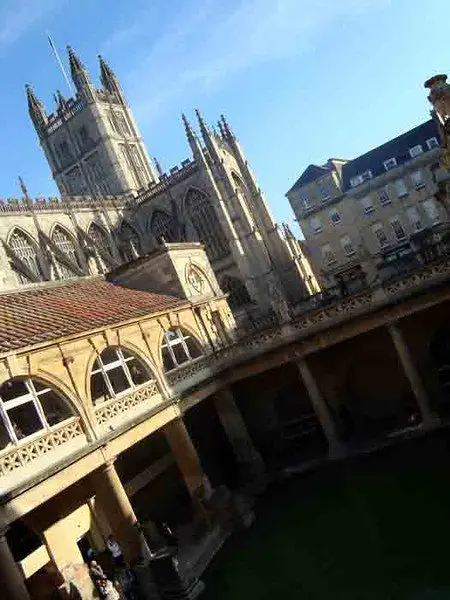
Although Bath’s perfectly-preserved Georgian buildings are one of its main attractions, I later found out that the city’s eagerness to maintain Bath’s appearance causes friction with some local residents. Most new buildings (including the downtown shopping area) are constructed in the traditional Georgian style, and great effort is taken to ensure that the city’s facades only change minimally.
Just as in Georgian times, there’s a great emphasis on the show: the face the world sees is what matters. Take a peek around the back of Pulteney Bridge – the ramshackle rear is completely at odds with the smart style of the shop fronts.
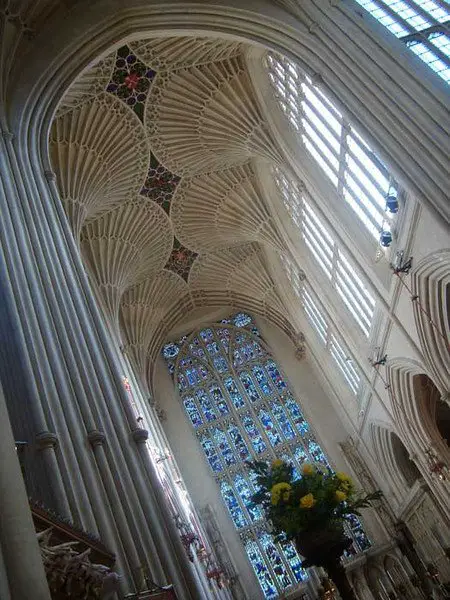
With so much to show off, it’s little wonder that the council wishes to preserve Bath’s beauty, though. Opposite the site of the Roman Baths stands the Abbey, some of which date back as early as the fifteenth century. Its fan-vaulted ceilings and stained glass windows show some truly impressive craftsmanship. The Baths themselves are an even earlier example of excellent design. The Romans discovered the thermal waters of Bath, UK and constructed the town of Aquae Sulis, at the heart of which stood the Baths.
Audio guided visits bring the Romans’ existence here to life, narrating the many artifacts found on the site, explaining the role of the Baths in the community, describing bathing rituals and life in Aquae Sulis.
After exploring the exhibition, I was glad I had never crossed paths with a Roman – the curses they rained down on those who stole their bathing robes were scarily imaginative! The Baths themselves have been well restored, and visitors can wander past the central pool, which sits below street-level with a view of the Abbey which makes everyone reach for their cameras.
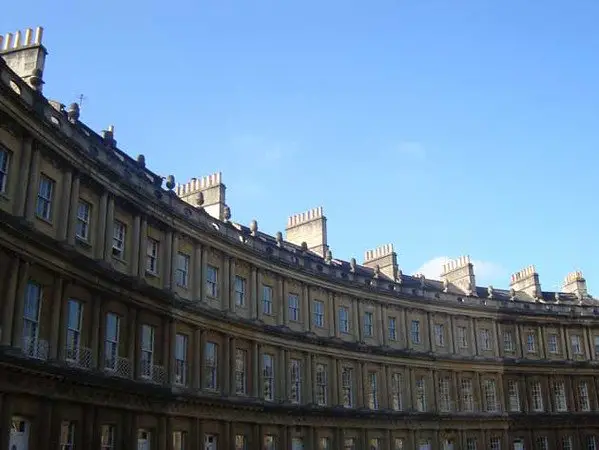
Exiting via the Pump Room, you may also be inspired to reach for your wallet – a prime afternoon tea shop for a sophisticated snack; it was the hub of the Georgian social scene. Skip the pricey afternoon tea and come for brunch instead – dishes such as eggs Benedict are much better valued, and the Pump Room is less crowded in the morning.
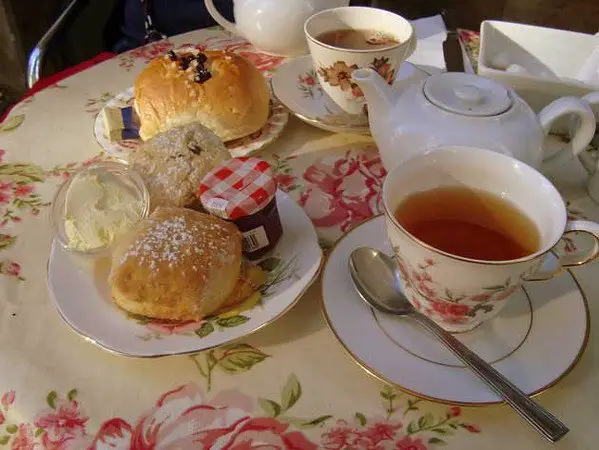
We took our tea at the Bath Bun, a café located on Abbey Green. Traditional afternoon tea of scones, clotted cream and jam served with a pot of tea was just £6 – a fraction of the price of the Pump Room. We also sampled a Bath Bun – a sort of sweet bread roll studded with currants and topped with sugar. Bath certainly isn’t short of tempting spots to eat, whether you’re looking for cozy cafés, gastro pubs or upmarket restaurants. Vegetarians will be in their element at Demuths, a chic meat-free eatery, while those after casual dining will enjoy the creative salads, sandwiches and hot dishes at both Sam’s Kitchen and Wild Café. Rather than choosing a traditional roast on Sunday, we opted to eat at Bistro La Barrique, a petite restaurant offering small plates of delicious French cooking: at £9.95 for three dishes (including the heavenly pan-fried sea bass served with squid ink linguine), it’s a bit of a bargain.
There’s more than just culinary indulgence on offer in Bath, UK though. Thermal bathing has been given a twenty-first-century update at Thermae Bath Spa, a sleek space where visitors can enjoy the city’s waters. There’s an indoor pool with a Jacuzzi area, a selection of steam rooms, saunas and foot baths and treatment rooms – and the main attraction, the rooftop pool. With a picture-perfect view of the Abbey and the city beyond, I couldn’t help but think that modern-day visitors to Bath have it better than both the Romans and the Georgians – after all, they didn’t get to gorge themselves in such an array of restaurants before soaking in Abbey’s shadow. And nobody stole my bathing robe.
* All photos property of and by the author
Pin for Later
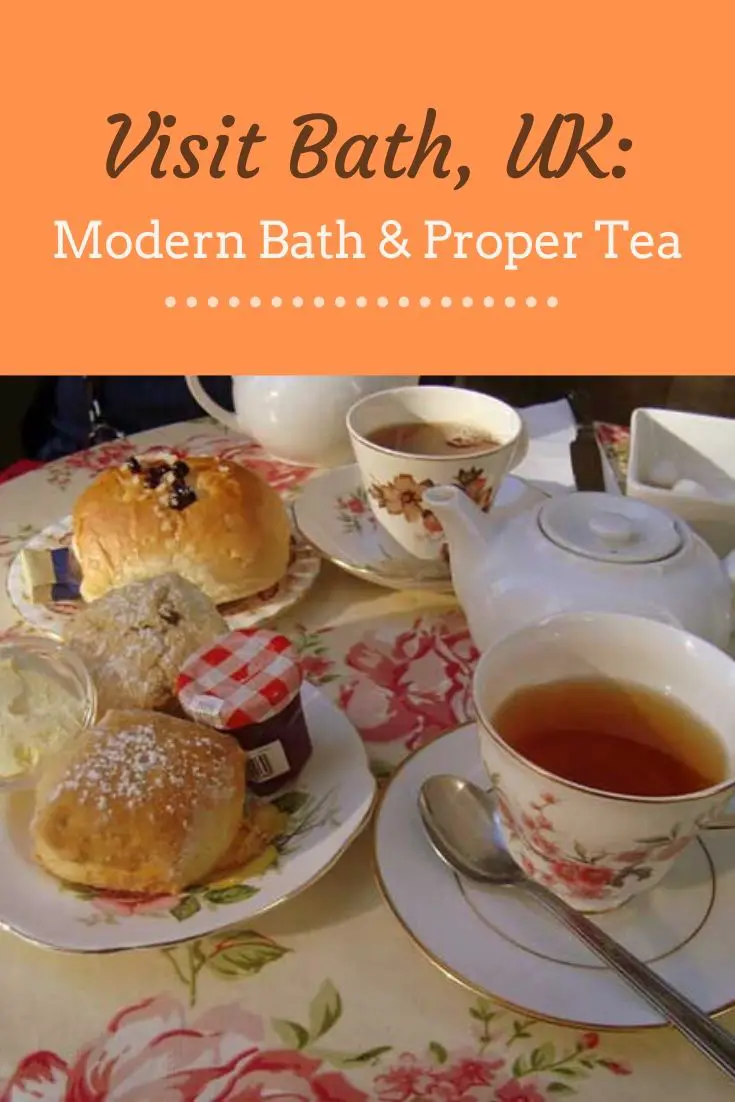
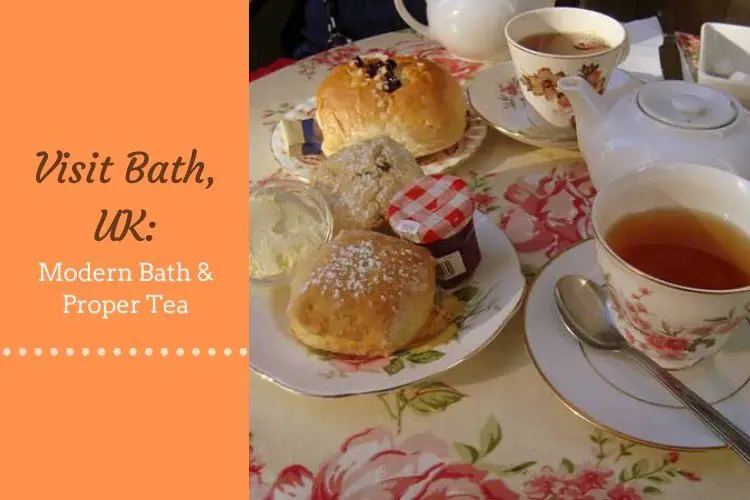
Great article! I just love Bath and you bring it to life beautifully! I do love the Pump Room for its old-style sophistication – I remember being taken as a child and feeling very grown-up and posh indeed 🙂
I’ve only visited London in the UK, and the more I read about other places, the more I want to return for a longer period of time and check out cities like this. It sounds enchanting!
Thanks Katy! I loved it, I’ll definitely go back. There’s so much of the UK I’ve yet to see!
You definitely should! London is great but not really that representative of the UK as a whole, so it’s worth seeing other towns and cities. It’s quite diverse for a small country!
I did a day tour to Bath when I was in London, and I found it very charming.
Bath is so beautiful! Fell in love with photographing the Roman baths.
Bath looks like a stunning place to visit!
Bath is such the epitome of a quintessential English town. And now I’m going to be craving crumpets and clotted cream all day long!